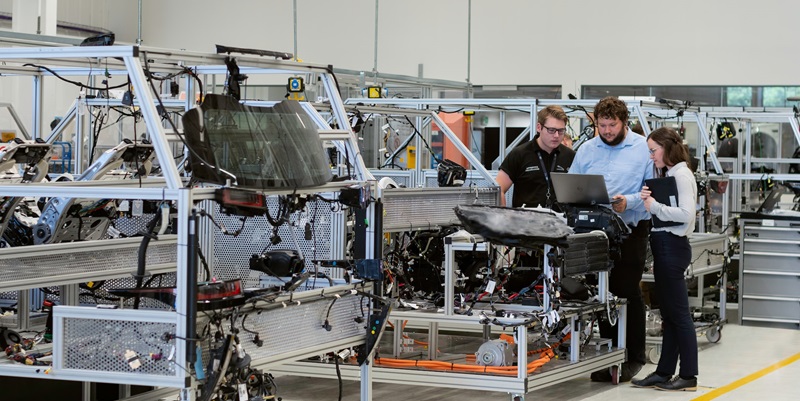In the era of smart manufacturing, where automation and data-driven processes reign supreme, efficient and reliable data storage techniques have become paramount. With the vast amount of data generated by modern manufacturing processes and systems, it is crucial to adopt appropriate methods to store and manage this information effectively. This article delves into various data storage techniques and their significance in the realm of smart manufacturing.
The importance of efficient data storage techniques in smart manufacturing
As the manufacturing industry becomes more digitized, the sheer volume of data being generated continues to rise exponentially. Without efficient data storage techniques, manufacturers may struggle to capitalize on the value that data holds. By implementing robust storage methods, manufacturers can ensure that data is organized, easily accessible, and can be leveraged for valuable insights and optimizations.
Relational databases for structured data storage
Relational databases, commonly implemented through SQL databases, are the traditional cornerstone of data storage. With well-defined schemas and tables, they offer a structured approach to storing data. Relational databases are reliable, scalable, and provide powerful querying capabilities, making them ideal for structured data storage in smart manufacturing.
In the era of the Internet of Things (IoT), manufacturing processes heavily rely on sensor data. Time-series databases are specially designed to handle and analyze time-stamped data generated by sensors, IoT devices, and monitoring systems. These databases optimize the storage, retrieval, and analysis of time-series data, enabling manufacturers to track real-time performance, identify anomalies, and make data-driven decisions.
Data warehousing for managing large volumes of data from multiple sources
In an increasingly interconnected manufacturing landscape, data is generated from multiple sources, including machines, enterprise systems, suppliers, and customers. Data warehousing involves collecting, storing, and managing large volumes of structured and unstructured data from these diverse sources. By centralizing this data, manufacturers can gain a holistic view of their operations and leverage it for business intelligence, analytics, and reporting.
Big Data technologies for handling unstructured and semi-structured data
Not all data in smart manufacturing is neatly structured. Many sources generate unstructured or semi-structured data, such as logs, social media feeds, and sensor readings. Big Data technologies like Hadoop and Apache Spark are designed to handle and store these large volumes of unstructured and semi-structured data, enabling manufacturers to extract valuable insights from seemingly chaotic information.
NoSQL databases for managing unstructured and semi-structured data
NoSQL databases, such as MongoDB and Cassandra, are gaining popularity in the smart manufacturing landscape due to their ability to handle unstructured and semi-structured data effectively. These databases offer flexibility, scalability, and high availability, making them suitable for storing diverse types of data. NoSQL databases are well-suited for use cases where data schemas may evolve rapidly or where flexibility is essential.
Cloud storage solutions for scalable and cost-effective data storage
The advent of cloud computing has revolutionized data storage for manufacturers. Cloud storage solutions offer scalability, cost-effectiveness, and flexibility. By leveraging cloud services, manufacturers can easily scale their data storage infrastructure to meet growing demands, pay only for what they use, and eliminate the need for on-premises hardware maintenance. Cloud storage also enables seamless collaboration and data accessibility across geographically dispersed teams.
Key considerations for data storage strategies in smart manufacturing
When formulating data storage strategies for smart manufacturing, several key factors should be taken into account. Scalability is crucial, as data volumes and sources continue to expand. Efficient data lifecycle management ensures that data is stored, retained, and archived appropriately, reducing storage costs and data governance risks. Data security measures, including encryption and access control, are vital to protecting valuable intellectual property. Data redundancy and disaster recovery planning provide resilience in the face of infrastructure failures or natural disasters. Integration with analytics and AI platforms allows manufacturers to harness the full potential of their data.
Introduction to the Open Manufacturing Hub (OMH) as a solution architectural pattern
The Open Manufacturing Hub (OMH) is an emerging solution architectural pattern that leverages technologies like Kafka and TimescaleDB for real-time data processing and storage in smart manufacturing environments. OMH facilitates seamless data integration, analysis, and sharing, enabling manufacturers to unlock valuable insights and drive continuous improvements.
Benefits of Adopting Strategic Data Storage Techniques in Smart Manufacturing
By adopting strategic data storage techniques, smart manufacturers can effectively manage the data deluge and turn data into a valuable asset. Efficient storage methods enable quick and easy data access, facilitate data-driven decision-making, improve operational efficiency, and foster innovation. With a robust data storage infrastructure in place, manufacturers can stay competitive in the digital age.
Smart manufacturing thrives on data, and efficient storage techniques are imperative for tapping into its potential. Relational databases, time-series databases, data warehousing, Big Data technologies, NoSQL databases, cloud storage, and the Open Manufacturing Hub offer unique advantages for storing and managing data in the smart manufacturing landscape. By considering scalability, data lifecycle management, security, redundancy, and integration with analytics and AI, manufacturers can unlock the true value of their data and gain a competitive edge in the rapidly evolving industry.

